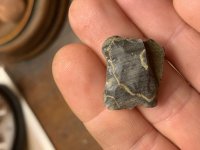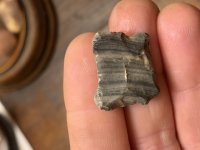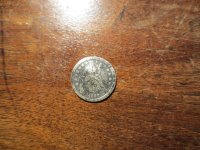kyphote
Hero Member
- Jan 12, 2010
- 583
- 52
- Detector(s) used
- White's MXT, GPX 4800
- Primary Interest:
- All Treasure Hunting
Yesterday I dug this base. It’s prettier than the early/mid Archaic quartzite varieties I’ve been finding and was 8” deeper (if that matters). Thoughts on age and material? I saw a similar pattern in one of my books but the material was identified as Upper Mercer chert from middle Ohio and I’m in Virginia. Author referred to the pattern as “lightning lines.”
Thanks for any insight.


Thanks for any insight.


Upvote
0







